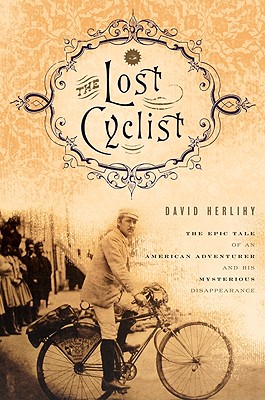In the late 1880s, Frank Lenz of Pittsburgh, a renowned high-wheel racer and long-distance tourist, dreamed of cycling around the world. He finally got his chance by recasting himself as a champion of the downsized “safety-bicycle” with inflatable tires, the forerunner of the modern road bike that was about to become wildly popular. In the spring of 1892 he quit his accounting job and gamely set out west to cover twenty thousand miles over three continents as a correspondent for Outing magazine. Two years later, after having survived countless near disasters and unimaginable hardships, he approached Europe for the final leg. He never made it. His mysterious disappearance in eastern Turkey sparked an international outcry and compelled Outing to send William Sachtleben, another larger-than-life cyclist, on Lenz’s trail.
David Herlihy, author of The Lost Cyclist and chronicler of Lenz and Sachtleben’s amazing story, dishes with us on the writing process, bicycling then and now, and more.
WORD: How did you first learn about Frank Lenz and his disappearance?
DAVID HERLIHY: It’s been about 20 years since I first delved into bicycle history. I began to read cycling literature from the 1890s, and would often come across the name of Lenz. He was something of cycling celebrity even before he embarked on his world tour in 1892, having completed several long distance rides on a high-wheeler with his pal Charles Petticord. And of course he became a national figure once he began his round-the-world journey in May 1892. He became an international figure two years later when he disappeared in Turkey.
W: What was the most surprising thing you learned during the research for the book?
DH: I was surprised at how much information turned up, not only about Lenz but also about the book’s second major character, William Sachtleben. When I first contemplated writing a book on Lenz, I wasn’t sure if I could find much beyond his own published reports in Outing magazine. But, in large part thanks to the Internet, I was able to turn up a great deal of new information, including dozens of unpublished photographs taken by Lenz before and during his world tour, and important materials relating to Sachtleben as well.
W: How do you think the interest in cycling of the late 1800s, when it was still a novelty, compares to our interest today in, say, the Tour de France and Lance Armstrong?
DH: There are some parallels. Cycling was a very new proposition to the millions of Americans who took to the wheel in the1890s, thanks to the introduction of the pneumatic safety bicycle. True, the highwheel sport had already been around
for at least a dozen years, but it appealed almost exclusively to athletic young men of certain means who were willing to mount the thing and take a few spills. Many Americans today are re-discovering the joys of cycling, and realizing that it’s not just for kids, and that it can, in fact, provide very practical and economical transportation under certain circumstances.
One might even draw a parallel between Lenz and Lance. Lenz helped bring the new safety bicycle to the attention of the American public by embarking on his tour, while Lance certainly did much to publicize the sport to the American public, which may indeed have helped to spark a renewed interest in cycling. On a personal level, they both came from broken homes and turned to cycling as a “way out.”
W: The book includes photos taken both of and by the two c



